| |
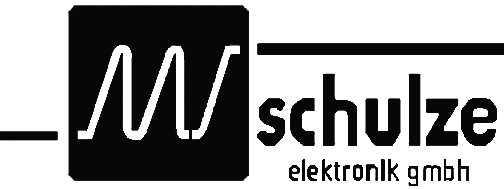
future
the new generation of speed controllers for the brushless and sensorless motor
generation (Scroll down for pictures)
The future is a micro-processor controlled high-performance speed governor
for 3-phase brushless motors with and without speed sensors.
It is an outstanding product reflecting the latest state of technology, and
offers high performance at a moderate price.
The future exploits ultra-high density integrated technology to produce a
very capable unit which is particularly small and light. Only three integrated
circuits (ICs) are used for the control and monitor sections, and the reduced
component count makes for a smaller unit with enhanced reliability. The
micro-processor has been selected to suit this application very accurately, and
its high clock speed, efficient code and internal hardware support help to push
the maximum motor speed limit upwards by a huge margin.
The future is only a little wider than a 2000 mAh Ni-Cd cell. The future is
assembled completely from SMT components, and its overall height and maximum
length are mainly determined by the generously dimensioned blocking capacitors.
These capacitors are essential for safe, reliable operation and their careful
positioning makes possible the unit's extremely compact format.
The future's immense performance is due to the use of intelligent control
algorithms, i.e. its ability to optimize its parameters automatically by analyzing
and adjusting the demands on it when actually in use. This means that
the control circuit adjusts itself to the momentary load situation as well as to
the motor in use. If you are using a motor with speed sensors, the future
by-passes them and is capable of "tickling" more power out of the
motor by compensating for incorrect timing.
Integral motor power sockets; matching plugs included.
ips (intelligent programming system) allows the future to self-learn the neutral
point and full-throttle point; fixed stick travel with the competition-future,
programmable stick travel in special versions of the future.
Power-On Reset and start-up surge safeguard
Direction of rotation can be reversed: simply swap over two motor power cables
Extremely fine and accurate motor speed control
Ultra-high rotational speed limit
Brake and no-brake modes
Excess current and excess temperature protection
Motor stall protection
Power reduction at low voltage
Opto-coupler for optimum interference rejection
LED monitor
High temperature heat-shrink sleeve
Two-layer, triple-thickness copper tracks on circuit boards: 2 x 105 µm for low
conductor losses.
Variants
Brushless "SPEED 400" motors are on the horizon, and our 25A
miniature controllers will be available at the same time.
Low voltage types:
future-45be: Identical to the future-45bo, but with the addition of a
BEC system. This version can only be used with 6 - 12 cells due to the limited
ability of the BEC system to dissipate excess power. This controller can also be
configured using the ips facility.
future-45bo: This controller is primarily designed for use in electric
gliders or non excessive half throttle use in other models with 6 to 17 Ni-Cd /
Ni-MH cells, and can be configured using the ips facility.
future-45Ko: The controller for longer duration half throttle as used in
sport models, aerobatic models or ducted fan models. Battery range 6 - 17 cells;
finned heat-sink; ips. Naturally the unit is suitable for use in model boats
provided that it is protected from contact with water by our water shielding
conformal coating.
future-45Ho or ...He: The controller for the use in helicopters. Extreme
soft start and longer duration half throttle use. Battery range 6 - 10/17 cells
(>10 cells no bec); finned heat-sink; Fixed throttle stick positions for idle
and full throttle.
AND: all futures run very efficient and cool under half throttle conditions.
FOR THIS REASON you will have longer flight times under half throttle conditions
and especially when using constant speed regulation mode.
future-58bo: This version can be used with 7 to 17 Ni-Cd cells in any
model where the capacity of the 45A version is marginal, and where the 90A type
would represent a sledgehammer to crack a nut. With its improved efficiency it
is also a good choice in models where cooling can be problematic. The intended
applications therefore include pylon racers as well as small hotliners and small
ducted-fan models. Can also be configured using the ips facility.
future-58Co or ...Ce: This version can be used with 6 to 10 Ni-Cd cells
in a 10th scale car. ips-car/boat: Learns neutral point, fixed stick range for
full throttle and brake. Fixed acceleration an brake settings. finned heat sink
future-58Wo: This version can be used with 7 to 17 Ni-Cd cells in a boat.
Learns neutral point. Fixed stick range for full throttle. No brake. Heat sink
for water cooling. Splash-water resistant sealing
future-70Po: Especially designed for 7-cell pylon racers. Lightweight,
short and low. Can be used with 7 - 10 cells. Fixed stick travels, brake cannot
be disabled.
future-90Fo: The thoroughbred speed controller for 10-cell glider
competition work. Also an excellent choice for 7-cell pylon racers. Can be used
with 7 - 17 cells. Fixed stick travels, brake cannot be disabled.
future-111Fo: For those who require even more than 90 A in 10-cell
competition work. Can be used with 7 - 17 cells. Fixed stick travels, brake
cannot be disabled.
High voltage types:
future-35bo: The controller for high cell numbers, for example as used
in ducted-fan models. Battery range 16 - 30 cells; finned heat-sink; ips.
future-35Ho: The controller for the use in helicopters with higher cell
count. Extreme soft start and longer duration half throttle use. Opto-coupler.
Battery range 16-30 cells; finned heat-sink; Fixed throttle stick positions for
idle and full throttle. Later we can re-program this future to insert a
constant rpm program.
future-55bo: The high-current controller for high cell numbers. Battery
range 16 - 30 cells; finned heat-sink; ips.
future-55Wo: The high-current controller for high cell numbers. Battery
range 16 - 30 cells; tubed heat-sink; ips-car/boat.
future-80Fo: The thoroughbred controller for 27-cell competition gliders.
Recommended for motor runs > totally 50 sec with 27 x 1000 cells, or motor
runs > totally 60 sec with 26 x 1250 cells. Runtime is limited for 5 seconds
followed by 15 seconds pause. Battery range 16 - 28 cells; fixed stick travels;
brake cannot be disabled; heat-sink; 72 FETs.
Note: the future-80Fo are only made for the F5B (26...27 cells) geared
motors.
Different modes selectable by the user for different groups of motors:
MODE 1:
Limit 120 000 rpm P4
(special mode for high rpm Plettenberg contest motors)
HP220/20/A2P6 5:1 or 7:1 @ 24-28 cells
AVEOX 14HC06Y1 @ 24-27 cells
MODE 2:
Limit 58 000 rpm P4
Comparable with future...bo program, but with high speed start procedure
HP220/30/A3P4 5:1, 7:1 at 16-28 cells
HP370/30/A2 at 16 - 28 cells
All Plettenberg motors except HP220/20/A2P6 5:1 or 7:1 at 24-28 cells
Well suited for Aveox, Hacker, Ikarus and Lehner motors.
MODE 3:
Limit 83 000 rpm P4
Mode for Aveox und Kontronik-motors
AVEOX 14HC06Y1,5 3.7:1 at 16-28 cells
AVEOX F27 at 16-28 cells
AVEOX1412Y2 3.7:1 at 16-28 cells
KBM42-30 6.7:1 at 16-24 cells
KBM42-24 5.2:1 at 16-27 cells
KBM52-18 3.7:1 at 16-28 cells
Highlights common to all units:
Ultra-small, ultra-light units. A crucial point for all modelers who require
maximum performance combined with minimum weight.
Better than 250-step resolution over the whole control range for extremely fine
speed control.
Controllers work reliably right down to the last scrap of energy in the battery
pack.
“Auto-arm” function and “power on reset”.
“ips” (intelligent programming system) with no pots! The speed controller
automatically configures itself every time to the stick travel when you switch
your receiver on respectively you connect your battery pack. The brake can also
be disabled in the same way if required.
“ips” also includes a special setup variant for geared motor systems. Fixed
stick travel between braking point and full-throttle point, softstart for
throttle and brake. It is normally essential to apply full-throttle at the start
of the flight. This variant only learns one stick position (brake point) when in
use. Fine-tuning the system to match the transmitter’s stick travel is still
possible, but must be done by adjusting the travel at the transmitter.
During the configuration process the motor acts as a loudspeaker to give you
audible confirmation of the procedure.
More future-variants for special use will follow:
for helicopters with speed governor,
for boats with water cooling and
for cars with proportional brake.
future-35He for "small" helicopters
future-35Ho for "large" helicopters
future-55Co for 1:5 cars
future-55Wo for boats
Specifications:
Type
[Unit]
| Current
[A]
| NiCd-
[Cells]
| Size
[mm]
| Weight
[g]
| Cable
[mm2]
| Throttle
[mOhm]
| Switching
freq.[kHz]
| Throttle*
[Type]
| Brake
[mOhm]
| Brake**
[Type]
| BEC
[V/Apeak]
| Umin-
Protect.
| RPM limit P4
| Usage
| Comment |
| future-18be
| 18/24
| 6-10
| 50*25*10
| 16-21
| 1,5
| 6*2
| 10
| n/g
| 6/3
| s/sg
| BEC 5V/1,5A
| 5V
| 63000
| Plane
| - |
| future-25be
| 25/33
| 6-10
| 50*25*12
| 18-23
| 1,5
| 6*2
| 10
| n/g
| 6/3
| s/sg
| BEC 5V/1,5A
| 5V
| 63000
| Plane
| - |
| future-20He
| 20/33
| 6-8
| 50*25*14
| 20-25
| 1,5
| 6*2
| 10
| n/g
| 6/3
| s/sg
| BEC 5V/1,5A
| 5V
| 63000
| Helicopter
| controller & governor |
| future-45bo
| 45/60
| 6-17
| 74*24*12
| 25-35
| 2,5
| 2,4*2
| 10
| n/g
| 2,4/3
| s/sg
| Opto coupler
| 5V
| 63000
| Plane
| - |
| future-45be
| 45/60
| 6-12
| 74*24*17
| 32-42
| 2,5
| 2,4*2
| 10
| n/g
| 2,4/3
| s/sg
| BEC 5V/3A
| 5V
| 63000
| Plane
| - |
| future-45Ko
| 45/60
| 6-17
| 74*24*14
| 28-38
| 2,5
| 2,4*2
| 10
| n/g
| 2,4/3
| s/sg
| Opto coupler
| 5V
| 63000
| Sport, Aerobatic
| Half throttle |
| future-45Wo
| 45/60
| 6-17
| 74*24*18
| 38-48
| 2,5
| 2,4*2
| 10
| n/g
| 2,4/3
| s/sg
| Opto coupler
| 5V
| 63000
| Boat
| splash water protected |
| future-45Ho
| 45/60
| 6-17
| 74*24*14
| 28-38
| 2,5
| 2,4*2
| 10
| h
| -
| -
| Opto coupler
| 5V
| 63000
| Helicopter
| Half throttle |
| future-45He
| 45/60
| 6-10
| 74*24*17
| 34-44
| 2,5
| 2,4*2
| 10
| h
| -
| -
| BEC 5V/3A
| 5V
| 63000
| Helicopter
| Half throttle |
| future-58bo
| 58/77
| 7-17
| 74*24*12
| 25-35
| 2,5
| 1,4*2
| 10
| n/g
| 1,4/3
| s/sg
| Opto coupler
| 5V
| 63000
| Plane
| Hotliner |
| future-58Co
| 58/77
| 6-10
| 69*24*14
| 27-37
| 2,5
| 1,4*2
| 10
| n/g
| 1,4/3
| s/sg
| Opto coupler
| 5V
| 63000
| Car
| 10th scale |
| future-58Ce
| 58/77
| 6-10
| 69*24*17
| 33-43
| 2,5
| 1,4*2
| 10
| n/g
| 1,4/3
| s/sg
| BEC 5.7V/3A
| 5V
| 63000
| Car
| 10th scale |
| future-70Po
| 70/120
| 7-10
| 69*24*10
| 21-31
| 2,5
| 1,4*2
| 20
| k
| 1,4/3
| ss
| Opto coupler
| 5V
| 84000
| Plane
| F5D (Pylon) |
| future-90Fo
| 90/120
| 7-17
| 74*24*16
| 31-46
| 4,0
| 1,2*2
| 20
| k
| 1,2/3
| ss
| Opto coupler
| 5V
| 84000
| F5D,F5B
| 7/10 cells |
| future-111Fo
| 111/148
| 7-17
| 74*24*16
| 31-46
| 4,0
| 0,7*2
| 20
| k
| 0,7/3
| ss
| Opto coupler
| 5V
| 84000
| F5B
| 10 cells |
| future-35bo
| 35/45
| 16-30
| 81*24*14
| 28-38
| 2,5
| 4,0*2
| 10
| n/g
| 4,0/3
| s/sg
| Opto coupler
| 12V
| 63000
| Plane
| ducted fan |
| future-35Ho
| 35/45
| 16-30
| 81*24*14
| 28-38
| 2,5
| 4,0*2
| 10
| h
| -
| -
| Opto coupler
| 12V
| 63000
| Helicopter
| - |
| future-55bo
| 55/70
| 16-30
| 81*24*19
| 37-47
| 2,5
| 2,0*2
| 10
| n/g
| 2,0/3
| s/sg
| Opto coupler
| 12V
| 63000
| Plane
| ducted fan, big glider |
| future-55Wo
| 55/70
| 16-30
| 81*24*23
| 49-59
| 2,5
| 2,0*2
| 10
| n/g
| 2,0/3
| s/sg
| Opto coupler
| 12V
| 63000
| Boat
| splash water protected |
| future-80Fo
| 80/110
| 16-28
| 81*24*19
| 37-47
| 2,5
| 2,0*2
| 20
| k
| 2,0/3
| ss
| Opto coupler
| 12V
| 120000
| F5B, 27 cells
| 3 modes |
[*] gas
soft-start:
| pv= programmable variable (softstart) with push button or PC (flysoft/carsoft)
pt= programmable variable (minimum, softstart) with push button or PC (flysoft/carsoft)
g = long soft-start (for gear)
n = normal soft-start
m = short soft-start (medium)
k = very short soft-start
h = helicopter-specific: very soft smooth start; soft rpm-changes; very
quick constant speed regulation..
|
[**] brake:
| s = switch function
sg= softswitch function with very smooth start (for gear)
ss= softswitch function (smooth start)
ps= programmable, different switch functions (strength) with push button
or PC (flysoft/carsoft)
pb= programmable proportional brake functions (min./max.) with key or PC
(flysoft/carsoft)
pp= programmable proportional brake functions (softstart) with key or PC
(flysoft/carsoft)
g = proportional reverse current brake = reverse gear
|
The RPM limitation is specified for a 4-pole motor (... P4).
For other number of poles use following multiplication factor for the RPM: P2=
*2; P4= *1; P6= *0,67; P8= *0,5; P10= *0,4.
future-18be, future-25be
future-20He
future-45bo
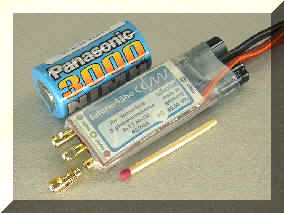
future-45bo (side view)

future-45Ko, future-45Ho

future-58Ce
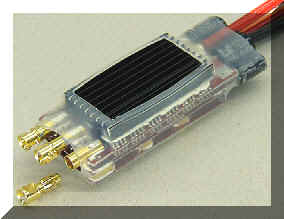
future-70Po (side view)

future-90Fo / future-111Fo
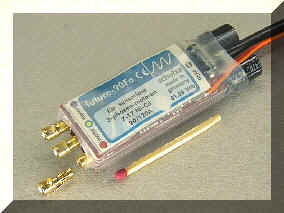
future-55bo / future-80Fo
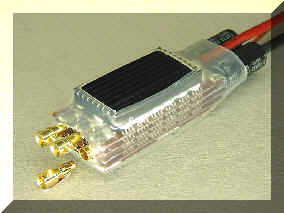
future-45Wo
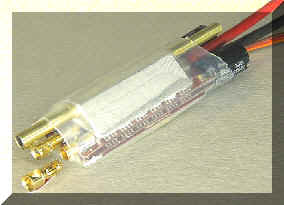
future-55Wo
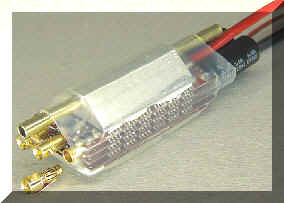
|